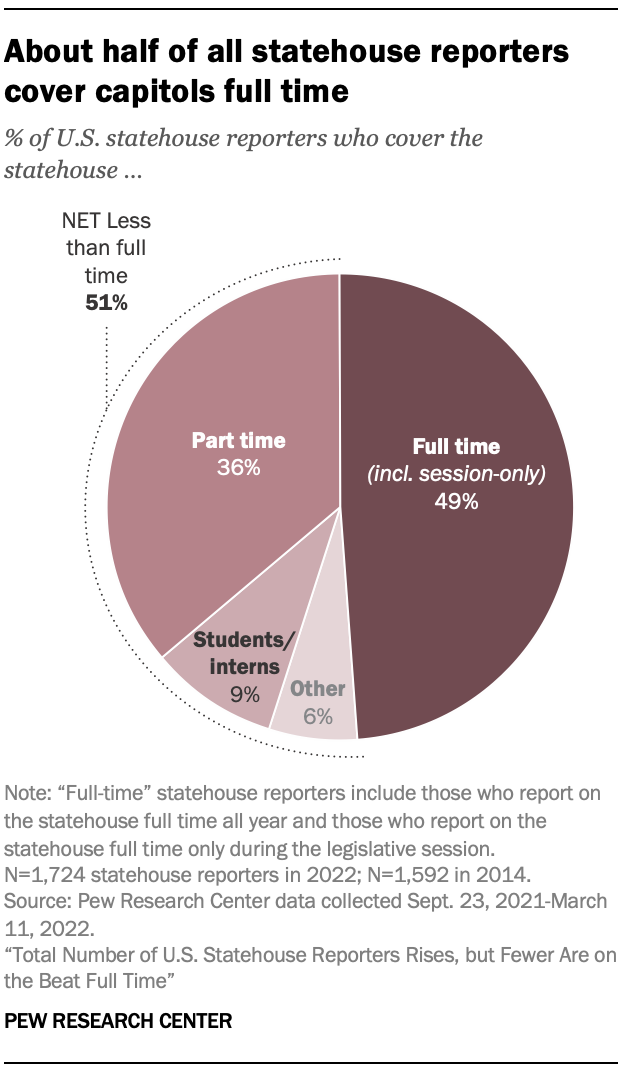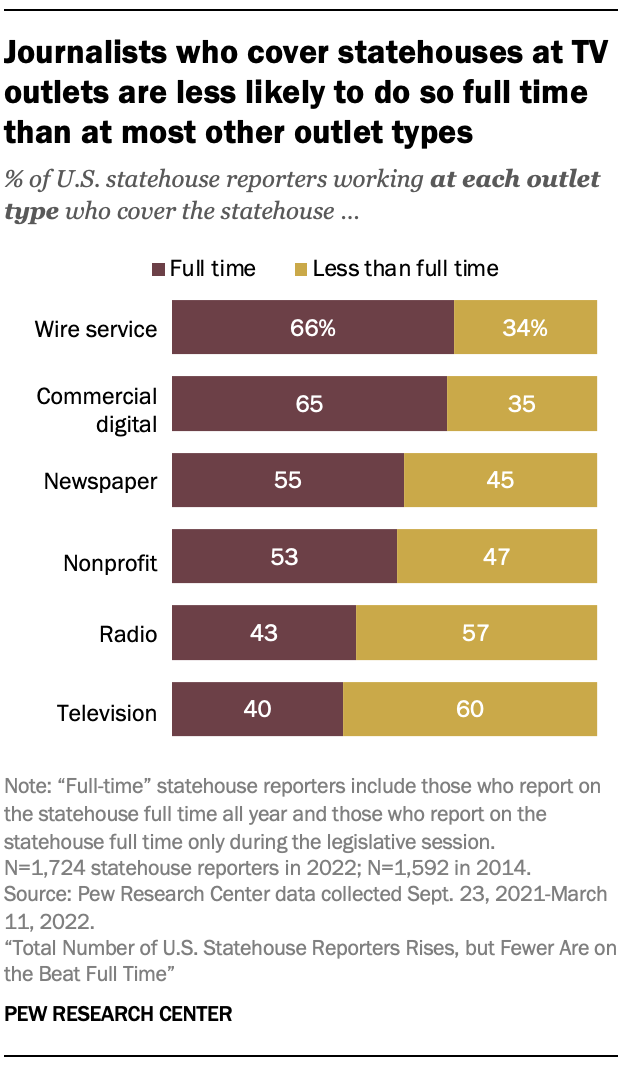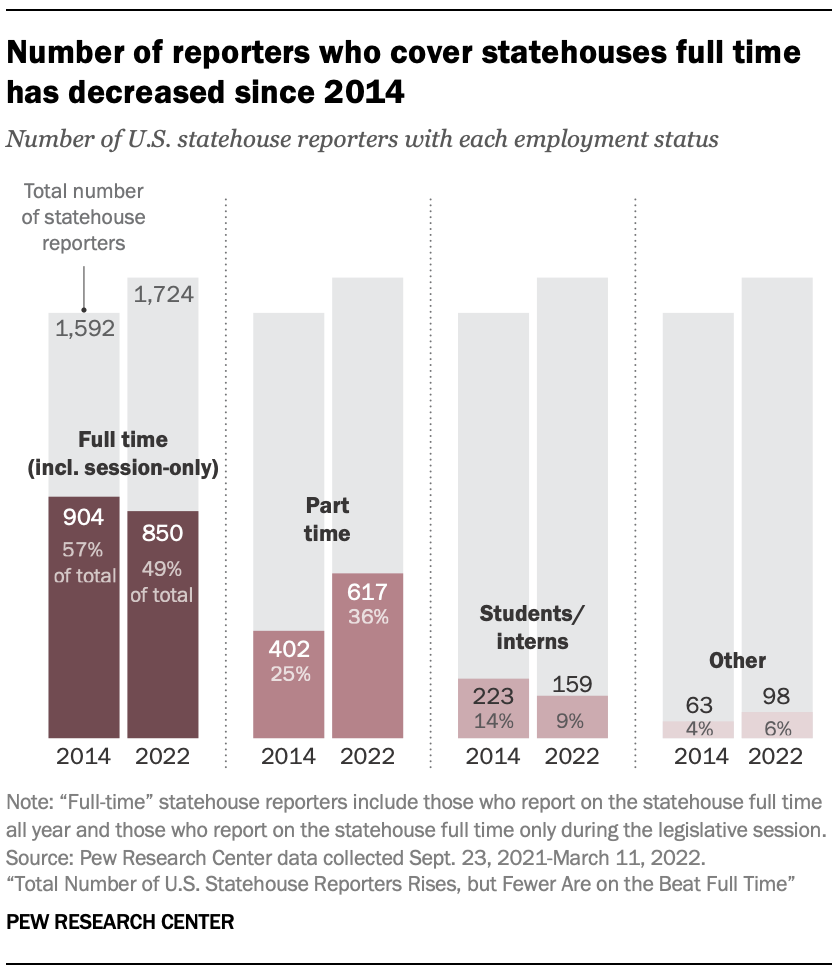
In total, 1,724 journalists cover state governments around the country, an increase from 1,592 statehouse reporters identified by Pew Research Center in 2014. But not all journalists dedicate the same amount of time to the statehouses. For example, some cover the statehouse only when a bill is relevant to their beat, while others cover legislative sessions full time.
About half of the statehouse reporters identified by this study (49%, or 850 reporters) report on the statehouse full time, including those who do this just when the legislature is in session and those who do so year-round.4
The rest (874, or 51%) cover the country’s statehouses on less than a full-time basis. This group includes three subcategories:
- About a third of all the statehouse reporters in this study (36%) cover the capitol part time. Many of these journalists cover other topic areas and are dispatched to cover the capitol when there is need. For example, an education reporter might go to the statehouse to cover a piece of legislation that impacts public schools.
- Roughly one-in-ten statehouse reporters in this study (9%) are students or interns. These 159 reporters often cover the statehouse for short periods of time, such as a semester, typically either as part of work for a university news outlet or as temporary staff embedded in a specific news outlet for an internship.
- Researchers also identified 98 supporting staff (6% of total) who didn’t fit into any of the above categories. These staff are identified by outlets as providing significant support – such as editors dedicated to managing statehouse coverage, digital producers, or videographers for television stations.

As with the number of reporters overall, the categorization of employment type relies on the information news outlets provided. One outlet, for example, might list an editor dedicated to a statehouse team as a part-time statehouse reporter, while another outlet might categorize them as other supporting staff. Researchers verified the employment status of reporters as necessary, but ultimately had to rely on the outlets’ descriptions of their employees working on statehouse coverage.
Some types of outlets rely more heavily upon full-time staffers than others. For example, 66% of statehouse reporters working at wire services are on the beat full time. By contrast, most reporters who cover the statehouse for radio (57%) or television stations (60%) do not focus on the statehouse full time.
Full-time statehouse reporters declined in number between 2014 and 2022

One of the important indicators of in-depth statehouse coverage is the number of full-time reporters, as full-time positions allow for more ongoing and in-depth reporting on statehouse issues and events. Sarah Gamard, a former state government reporter for the News Journal of Wilmington in Delaware, said that statehouse reporters “often have other jobs or they often have other obligations, myself included. … In a perfect world, there would be one of me sitting in the committee meetings and listening to every single debate just looking for nuggets.”
The number of full-time reporters covering statehouses in 2022 is smaller than when last measured in 2014.
At that time, full-time statehouse reporters (including those who are full time only during legislative sessions) accounted for 57% of all statehouse reporters, a figure that dropped to 49% in 2022. In total numbers, this represents a drop from 904 full-time statehouse reporters in 2014 to 850 in 2022.
The number of part-time statehouse journalists, however, increased from 402 in 2014 (25%) to 617 in 2022 (36%). Students and interns, at 159 reporters, make up 9% of the pool, down from 223 reporters (14% of the total) in 2014. Other supporting staff made up less than 10% of the total in both studies.


 U.S. statehouse reporters by state
U.S. statehouse reporters by state